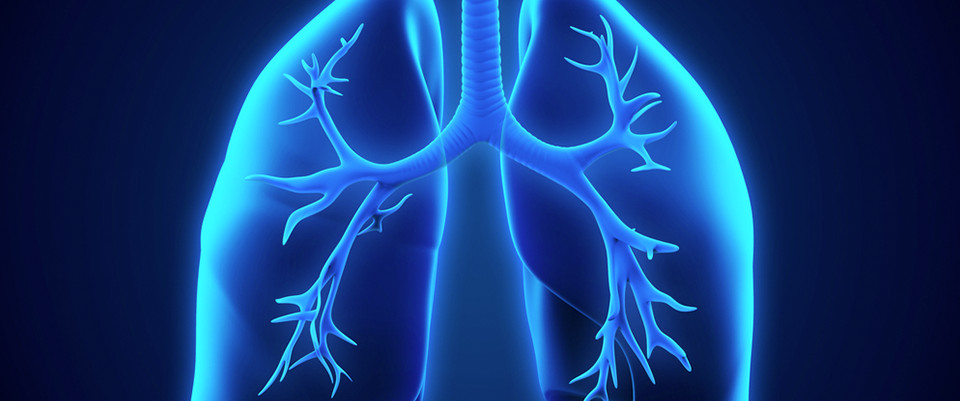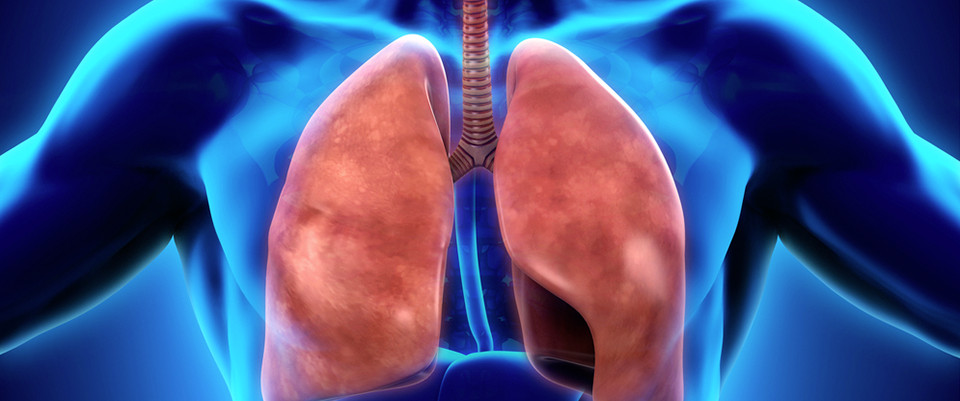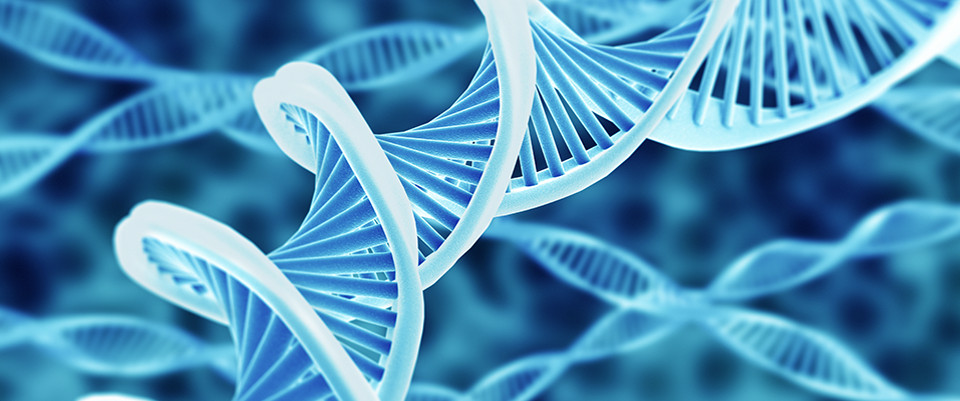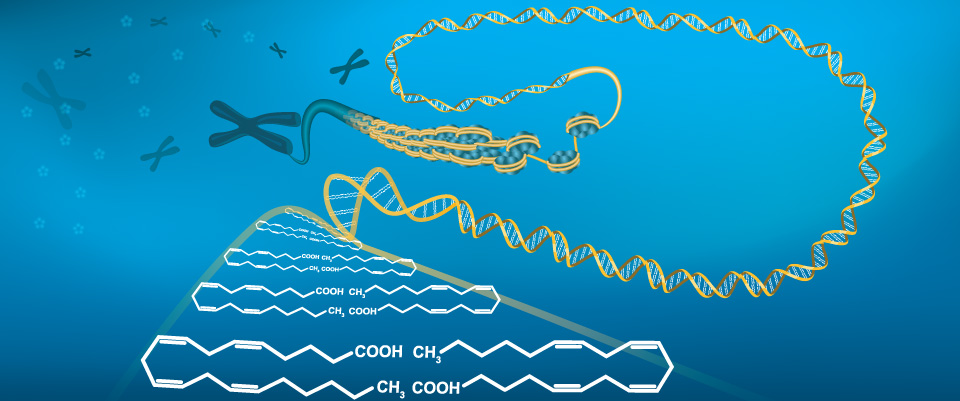PubMed
Intermediate-type vancomycin resistance (VISA) in genetically-distinct Staphylococcus aureus isolates is linked to specific, reversible metabolic alterations.
Related Articles
Intermediate-type vancomycin resistance (VISA) in genetically-distinct Staphylococcus aureus isolates is linked to specific, reversible metabolic alterations.
PLoS One. 2014;9(5):e97137
Authors: Alexander EL, Gardete S, Bar HY, Wells MT, Tomasz A, Rhee KY
Abstract
Intermediate (VISA-type) vancomycin resistance in Staphylococcus aureus has been associated with a range of physiologic and genetic alterations. Previous work described the emergence of VISA-type resistance in two clonally-distinct series of isolates. In both series (the first belonging to MRSA clone ST8-USA300, and the second to ST5-USA100), resistance was conferred by a single mutation in yvqF (a negative regulator of the vraSR two-component system associated with vancomycin resistance). In the USA300 series, resistance was reversed by a secondary mutation in vraSR. In this study, we combined systems-level metabolomic profiling with statistical modeling techniques to discover specific, reversible metabolic alterations associated with the VISA phenotype.
PMID: 24817125 [PubMed - indexed for MEDLINE]
Evidence supporting distinct functions of three cytosolic glutamine synthetases and two NADH-glutamate synthases in rice.
Related Articles
Evidence supporting distinct functions of three cytosolic glutamine synthetases and two NADH-glutamate synthases in rice.
J Exp Bot. 2014 Oct;65(19):5519-25
Authors: Yamaya T, Kusano M
Abstract
The functions of the three isoenzymes of cytosolic glutamine synthetase (GS1;1, GS1;2, and GS1;3) and two NADH-glutamate synthases (NADH-GOGAT1 and NADH-GOGAT2) in rice (Oryza sativa L.) were characterized using a reverse genetics approach and spatial expression of the corresponding genes. OsGS1;2 and OsNADH-GOGAT1 were mainly expressed in surface cells of rice roots in an NH4 (+)-dependent manner. Disruption of either gene by the insertion of endogenous retrotransposon Tos17 caused reduction in active tiller number and hence panicle number at harvest. Re-introduction of OsGS1;2 cDNA under the control of its own promoter into the knockout mutants successfully restored panicle number to wild-type levels. These results indicate that GS1;2 and NADH-GOGAT1 are important in the primary assimilation of NH4 (+) taken up by rice roots. OsGS1;1 and OsNADH-GOGAT2 were mainly expressed in vascular tissues of mature leaf blades. OsGS1;1 mutants showed severe reduction in growth rate and grain filling, whereas OsNADH-GOGAT2 mutants had marked reduction in spikelet number per panicle. Complementation of phenotypes seen in the OsGS1;1 mutant was successfully observed when OsGS1;1 was re-introduced. Thus, these two enzymes could be important in remobilization of nitrogen during natural senescence. Metabolite profiling data showed a crucial role of GS1;1 in coordinating metabolic balance in rice. Expression of OsGS1:3 was spikelet-specific, indicating that it is probably important in grain ripening and/or germination. Thus, these isoenzymes seem to possess distinct and non-overlapping functions and none was able to compensate for the individual function of another.
PMID: 24634487 [PubMed - indexed for MEDLINE]
Sex hormone-binding globulin associations with circulating lipids and metabolites and the risk for type 2 diabetes: observational and causal effect estimates.
Sex hormone-binding globulin associations with circulating lipids and metabolites and the risk for type 2 diabetes: observational and causal effect estimates.
Int J Epidemiol. 2015 Jun 6;
Authors: Wang Q, Kangas AJ, Soininen P, Tiainen M, Tynkkynen T, Puukka K, Ruokonen A, Viikari J, Kähönen M, Lehtimäki T, Salomaa V, Perola M, Davey Smith G, Raitakari OT, Järvelin MR, Würtz P, Kettunen J, Ala-Korpela M
Abstract
BACKGROUND: The causal role of circulating sex hormone-binding globulin (SHBG) for type 2 diabetes is controversial. Information on the relations between SHBG and new biomarkers of cardiometabolic risk is scarce.
METHODS: We applied quantitative nuclear magnetic resonance metabolomics in three Finnish population-based cohorts to comprehensively profile circulating lipids and metabolites and study their associations with SHBG. Mendelian randomization was used to examine potential causality of SHBG on the metabolic measures and insulin resistance. Prospective associations and causal effect estimates of SHBG on type 2 diabetes were assessed via meta-analysis including summary statistics from the DIAGRAM consortium.
RESULTS: In cross-sectional analysis in 6475 young adults (mean age 31, 57% men), higher SHBG was linked with a more favourable cardiometabolic risk profile, including associations with lipoprotein subclasses, fatty acid composition, amino acids, ketone bodies and inflammation-linked glycoproteins. Prospective analysis of 1377 young adults with 6-year follow-up indicated that SHBG is also associated with future insulin resistance. Mendelian randomization suggested only minor, if any, causal effects of SHBG on lipid and metabolite measures and insulin resistance(n = 10 895).Causal effect estimates on type 2 diabetes for 41 439 cases and 103 870 controls indicated a causative protective role of SHBG (OR = 0.83 per 1-SD, 95% CI: 0.76, 0.91); however, effects were considerably weaker than observed in meta-analysis of prospective studies [hazard ratio (HR) = 0.47 per 1-SD, 95% CI: 0.41, 0.53].
CONCLUSION: Circulating SHBG is strongly associated with systemic metabolism and predictive for insulin resistance and diabetes. The weaker causal estimates suggest that the observational associations are partly confounded rather than conferred directly via circulating SHBG.
PMID: 26050255 [PubMed - as supplied by publisher]
Metabolomics and renal disease.
Metabolomics and renal disease.
Curr Opin Nephrol Hypertens. 2015 Jul;24(4):371-379
Authors: Rhee EP
Abstract
PURPOSE OF REVIEW: This review summarizes recent metabolomics studies of renal disease, outlining some of the limitations of the literature to date.
RECENT FINDINGS: The application of metabolomics in nephrology research has expanded from the initial analyses of uremia to include both cross-sectional and longitudinal studies of earlier stages of kidney disease. Although these studies have nominated several potential markers of incident chronic kidney disease (CKD) and CKD progression, a lack of overlap in metabolite coverage has limited the ability to synthesize results across groups. Furthermore, direct examination of renal metabolite handling has underscored the substantial impact kidney function has on these potential markers (and many other circulating metabolites). In experimental studies, metabolomics has been used to identify a signature of decreased mitochondrial function in diabetic nephropathy and a preference for aerobic glucose metabolism in polycystic kidney disease. In each case, these studies have outlined novel therapeutic opportunities. Finally, as a complement to the longstanding interest in renal metabolite clearance, the microbiome has been increasingly recognized as the source of many plasma metabolites, including some with potential functional relevance to CKD and its complications.
SUMMARY: The high-throughput, high-resolution phenotyping enabled by metabolomics technologies has begun to provide insight on renal disease in clinical, physiologic, and experimental contexts.
PMID: 26050125 [PubMed - as supplied by publisher]
A systems view of type 2 diabetes-associated metabolic perturbations in saliva, blood and urine at different timescales of glycaemic control.
A systems view of type 2 diabetes-associated metabolic perturbations in saliva, blood and urine at different timescales of glycaemic control.
Diabetologia. 2015 Jun 7;
Authors: Yousri NA, Mook-Kanamori DO, Selim MM, Takiddin AH, Al-Homsi H, Al-Mahmoud KA, Karoly ED, Krumsiek J, Do KT, Neumaier U, Mook-Kanamori MJ, Rowe J, Chidiac OM, McKeon C, Al Muftah WA, Kader SA, Kastenmüller G, Suhre K
Abstract
AIMS/HYPOTHESIS: Metabolomics has opened new avenues for studying metabolic alterations in type 2 diabetes. While many urine and blood metabolites have been associated individually with diabetes, a complete systems view analysis of metabolic dysregulations across multiple biofluids and over varying timescales of glycaemic control is still lacking.
METHODS: Here we report a broad metabolomics study in a clinical setting, covering 2,178 metabolite measures in saliva, blood plasma and urine from 188 individuals with diabetes and 181 controls of Arab and Asian descent. Using multivariate linear regression we identified metabolites associated with diabetes and markers of acute, short-term and long-term glycaemic control.
RESULTS: Ninety-four metabolite associations with diabetes were identified at a Bonferroni level of significance (p < 2.3 × 10(-5)), 16 of which have never been reported. Sixty-five of these diabetes-associated metabolites were associated with at least one marker of glycaemic control in the diabetes group. Using Gaussian graphical modelling, we constructed a metabolic network that links diabetes-associated metabolites from three biofluids across three different timescales of glycaemic control.
CONCLUSIONS/INTERPRETATION: Our study reveals a complex network of biochemical dysregulation involving metabolites from different pathways of diabetes pathology, and provides a reference framework for future diabetes studies with metabolic endpoints.
PMID: 26049400 [PubMed - as supplied by publisher]
Novel methodologies for biomarker discovery in atherosclerosis.
Novel methodologies for biomarker discovery in atherosclerosis.
Eur Heart J. 2015 Jun 5;
Authors: Hoefer IE, Steffens S, Ala-Korpela M, Bäck M, Badimon L, Bochaton-Piallat ML, Boulanger CM, Caligiuri G, Dimmeler S, Egido J, Evans PC, Guzik T, Kwak BR, Landmesser U, Mayr M, Monaco C, Pasterkamp G, Tuñón J, Weber C, ESC Working Group Atherosclerosis and Vascular Biology
Abstract
Identification of subjects at increased risk for cardiovascular events plays a central role in the worldwide efforts to improve prevention, prediction, diagnosis, and prognosis of cardiovascular disease and to decrease the related costs. Despite their high predictive value on population level, traditional risk factors fail to fully predict individual risk. This position paper provides a summary of current vascular biomarkers other than the traditional risk factors with a special focus on the emerging -omics technologies. The definition of biomarkers and the identification and use of classical biomarkers are introduced, and we discuss the limitations of current biomarkers such as high sensitivity C-reactive protein (hsCRP) or N-terminal pro-brain natriuretic peptide (NT-proBNP). This is complemented by circulating plasma biomarkers, including high-density lipoprotein (HDL), and the conceptual shift from HDL cholesterol levels to HDL composition/function for cardiovascular risk assessment. Novel sources for plasma-derived markers include microparticles, microvesicles, and exosomes and their use for current omics-based analytics. Measurement of circulating micro-RNAs, short RNA sequences regulating gene expression, has attracted major interest in the search for novel biomarkers. Also, mass spectrometry and nuclear magnetic resonance spectroscopy have become key complementary technologies in the search for new biomarkers, such as proteomic searches or identification and quantification of small metabolites including lipids (metabolomics and lipidomics). In particular, pro-inflammatory lipid metabolites have gained much interest in the cardiovascular field. Our consensus statement concludes on leads and needs in biomarker research for the near future to improve individual cardiovascular risk prediction.
PMID: 26049157 [PubMed - as supplied by publisher]
Metabolomic profiles illuminate the efficacy of Chinese herbal Da-Cheng-Qi decoction on acute pancreatitis in rats.
Metabolomic profiles illuminate the efficacy of Chinese herbal Da-Cheng-Qi decoction on acute pancreatitis in rats.
Pancreatology. 2015 May 11;
Authors: Li J, Zhu SF, Zhao XL, Liu YX, Wan MH, Guo H, Liu YL, Gong HL, Chen GY, Tang WF
Abstract
BACKGROUND AND OBJECTIVES: Chinese herbal drug Da-Cheng-Qi decoction (DCQD) has been widely used for decades to treat acute pancreatitis (AP). Previous trials are mostly designed to state the potential mechanisms of the therapeutic effects rather than to detect its whole effect on metabolism. This study aimed to investigate the efficacy of DCQD on metabolism in AP.
METHODS: Twenty-two male adult Sprague-Dawley rats were randomized into three groups. AP was induced by retrograde ductal infusion of 3.5% sodium taurocholate solution in DCQD and AP group, while 0.9% saline solution was used in sham operation (SO) group. Blood samples were obtained 12 h after drug administration and a 600 MHz superconducting Nuclear Magnetic Resonance (NMR) spectrometer was used to detected plasma metabolites. Principal Components Analysis (PCA) and Partial Least Squares-Discriminant Analysis after Orthogonal Signal Correction (OSC-PLS-DA) were applied to analyze the Longitudinal Eddy-delay (LED) and Carr-Purcell-Meiboom-Gill (CPMG) spectra.
RESULTS: Differences in concentrations of metabolites among the three groups were detected by OSC-PLS-DA of 1HNMR spectra (both LED and CPMG). Compared with SO group, DCQD group had higher levels of plasma glycerol, glutamic acid, low density lipoprotein (LDL), saturated fatty acid (FA) and lower levels of alanine and glutamine, while the metabolic changes were reversed in the AP group.
CONCLUSIONS: Our results demonstrated that DCQD was capable of altering the changed concentrations of metabolites in rats with AP and 1HNMR-based metabolomic approach provided a new methodological cue for systematically investigating the efficacies and mechanisms of DCQD in treating AP.
PMID: 26048200 [PubMed - as supplied by publisher]
Metabolomic Endotype of Asthma.
Metabolomic Endotype of Asthma.
J Immunol. 2015 Jun 5;
Authors: Comhair SA, McDunn J, Bennett C, Fettig J, Erzurum SC, Kalhan SC
Abstract
Metabolomics, the quantification of small biochemicals in plasma and tissues, can provide insight into complex biochemical processes and enable the identification of biomarkers that may serve as therapeutic targets. We hypothesized that the plasma metabolome of asthma would reveal metabolic consequences of the specific immune and inflammatory responses unique to endotypes of asthma. The plasma metabolomic profiles of 20 asthmatic subjects and 10 healthy controls were examined using an untargeted global and focused metabolomic analysis. Individuals were classified based on clinical definitions of asthma severity or by levels of fraction of exhaled NO (FENO), a biomarker of airway inflammation. Of the 293 biochemicals identified in the plasma, 25 were significantly different among asthma and healthy controls (p < 0.05). Plasma levels of taurine, lathosterol, bile acids (taurocholate and glycodeoxycholate), nicotinamide, and adenosine-5-phosphate were significantly higher in asthmatics compared with healthy controls. Severe asthmatics had biochemical changes related to steroid and amino acid/protein metabolism. Asthmatics with high FENO, compared with those with low FENO, had higher levels of plasma branched-chain amino acids and bile acids. Asthmatics have a unique plasma metabolome that distinguishes them from healthy controls and points to activation of inflammatory and immune pathways. The severe asthmatic and high FENO asthmatic have unique endotypes that suggest changes in NO-associated taurine transport and bile acid metabolism.
PMID: 26048149 [PubMed - as supplied by publisher]
Pavement cells: a model system for non-transcriptional auxin signalling and crosstalks.
Pavement cells: a model system for non-transcriptional auxin signalling and crosstalks.
J Exp Bot. 2015 Jun 4;
Authors: Chen J, Wang F, Zheng S, Xu T, Yang Z
Abstract
Auxin (indole acetic acid) is a multifunctional phytohormone controlling various developmental patterns, morphogenetic processes, and growth behaviours in plants. The transcription-based pathway activated by the nuclear TRANSPORT INHIBITOR RESISTANT 1/auxin-related F-box auxin receptors is well established, but the long-sought molecular mechanisms of non-transcriptional auxin signalling remained enigmatic until very recently. Along with the establishment of the Arabidopsis leaf epidermal pavement cell (PC) as an exciting and amenable model system in the past decade, we began to gain insight into non-transcriptional auxin signalling. The puzzle-piece shape of PCs forms from intercalated or interdigitated cell growth, requiring local intra- and inter-cellular coordination of lobe and indent formation. Precise coordination of this interdigitated pattern requires auxin and an extracellular auxin sensing system that activates plasma membrane-associated Rho GTPases from plants and subsequent downstream events regulating cytoskeletal reorganization and PIN polarization. Apart from auxin, mechanical stress and cytokinin have been shown to affect PC interdigitation, possibly by interacting with auxin signals. This review focuses upon signalling mechanisms for cell polarity formation in PCs, with an emphasis on non-transcriptional auxin signalling in polarized cell expansion and pattern formation and how different auxin pathways interplay with each other and with other signals.
PMID: 26047974 [PubMed - as supplied by publisher]
Sulfur amino acid metabolism in Zucker diabetic fatty rats.
Sulfur amino acid metabolism in Zucker diabetic fatty rats.
Biochem Pharmacol. 2015 Jun 3;
Authors: Kwak HC, Kim YM, Oh SJ, Kim SK
Abstract
The present study was aimed to investigate the metabolomics of sulfur amino acids in Zucker diabetic fatty (ZDF) rats, an obese type 2 diabetic animal model. Plasma levels of total cysteine, homocysteine and methionine, but not glutathione (GSH) were markedly decreased in ZDF rats. Hepatic methionine, homocysteine, cysteine, betaine, taurine, spermidine and spermine were also decreased. There are no significant difference in hepatic S-adenosylmethionine, S-adenosylhomocysteine, GSH, GSH disulfide, hypotaurine and putrescine between control and ZDF rats. Hepatic SAH hydrolase, betaine-homocysteine methyltransferase and methylene tetrahydrofolate reductase were up-regulated while activities of gamma-glutamylcysteine ligase and methionine synthase were decreased. The area under the curve (AUC) of methionine and methionine-d4 was not significantly different in control and ZDF rats treated with a mixture of methionine (60mg/kg) and methionine-d4 (20mg/kg). Moreover, the AUC of the increase in plasma total homocysteine was comparable between two groups, although the homocysteine concentration curve was shifted leftward in ZDF rats, suggesting that the plasma total homocysteine after the methionine loading was rapidly increased and normalized in ZDF rats. These results show that the AUC of plasma homocysteine is not responsive to the up-regulation of hepatic BHMT in ZDF rats. The present study suggests that the decrease in hepatic methionine may be responsible for the decreases in its metabolites, such as homocysteine, cysteine, and taurine in liver and consequently decreased plasma homocysteine levels.
PMID: 26047850 [PubMed - as supplied by publisher]
[Discrimination of common oral streptococcus with metabonomics method].
Related Articles
[Discrimination of common oral streptococcus with metabonomics method].
Hua Xi Kou Qiang Yi Xue Za Zhi. 2009 Oct;27(5):553-6
Authors: Guo Q, Xiao LY, Zhou XD, Li MY, Lu WX, Xiong P, Jia XM, Li W
Abstract
OBJECTIVE: To evaluate the feasibility of identifying oral streptococcus by comparing their metabolic profiling, and to find a convenient and rapid way to discriminate oral microorganisms.
METHODS: The pure cultivation of Streptococcus sanguis ATCC 10556 and Streptococcus sobrinus 6715 (reference strain) from solid culture were respectively inoculated in TPY liquid medium. Then the growth quantity was measured periodically by turbidimetry and the growth curves of the inoculated bacteria were completed. The culture solutions in the stationary phase of the two bacteria were centrifuged, and then tested with the 1H-nuclear magnetic resonance (1H-NMR) spectrometer respectively. The gained free induction decay (FID) data were all inputted into MestReC Soft and finally transformed into metabolic profiling. The metabolic profiles were integrated segmentingly and the results were inputted into SIMCA-P Soft for principal components analysis (PCA).
RESULTS: The PCA results showed the obvious clustering phenomena and the points of two group data differentially centralized in two clusters. Therefore, the NMR-based metabonomics profiles can discriminate the two different kinds of bacteria.
CONCLUSION: The metabonomics can be expected to be a kind of promising useful method in quick discrimination of oral streptococcus.
PMID: 19927732 [PubMed - indexed for MEDLINE]
[Preliminary study on the discrimination of putative periodontal pathogens with a metabonomics method].
Related Articles
[Preliminary study on the discrimination of putative periodontal pathogens with a metabonomics method].
Hua Xi Kou Qiang Yi Xue Za Zhi. 2009 Jun;27(3):310-2, 316
Authors: Lu WX, Wu YF, Xiao LY, Li MY, Guo Q, Xiong P, Jia XM, Xiao XR, Zhu Z, Gong QM, Li W
Abstract
OBJECTIVE: To evaluate the feasibility of identifying oral pathogenic bacteria by comparing the metabolic profiling of putative periodontal pathogens and try to find a convenient and rapid way to discriminate oral microorganisms.
METHODS: Suspensions of Porphyromonas gingivalis, Prevotella intermedia and Fusobacterium nucleatum with same density were prepared and cultured respectively at liquid BHI medium. Then the growth quantity was measured periodically through turbidimetry and the growth curves of the inoculated bacteria were completed. The culture solutions of stable growth phase were sampled and characterized by 1H-nuclear magnetic resonance 1H-NMR). The data of 1H-NMR spectroscope results were analyzed by principal components analysis (PCA).
RESULTS: The PCA showed the obvious clustering phenomena and the points of three groups differentially centralized to three clusters. Therefore, the NMR-based metabonomics profiles could discriminate the three different kinds of bacteria.
CONCLUSION: The metabonomics is a potential classable method to identify the oral pathogenic bacteria.
PMID: 19637485 [PubMed - indexed for MEDLINE]
[A preliminary investigation on plasma of non-syndromic cleft lip and/or palate using nuclear magnetic resonance-based metabonomics].
Related Articles
[A preliminary investigation on plasma of non-syndromic cleft lip and/or palate using nuclear magnetic resonance-based metabonomics].
Hua Xi Kou Qiang Yi Xue Za Zhi. 2009 Apr;27(2):147-9, 153
Authors: Song JK, Zhou JL, Luo H, Shi B, Huang J, Li W
Abstract
OBJECTIVE: To access the feasibility of employing metabonomics method in clinical studies. This pilot study intends to introduce nuclear magnetic resonance (NMR)-based metabonomics method to elucidate the metabolism of non-syndromic cleft lip and/or palate (NSCLP) patients.
METHODS: High-resolution 1H NMR spectroscopy was performed on blood plasma obtained from NSCLP and non-malformed children. All signal of 1H NMR spectra were recognized within MESTRE-v4.7, and the 1H NMR spectra integration into bins (or buckets) across the spectral regions of bin 0.04 was performed automatically in MESTRE-v4.7. The resulting data matrix was further analyzed, which was performed by SIMCA-P 11.0. The principal component analysis (PCA) was applied to the centered data to explore any clustering behavior of the samples.
RESULTS: The results demonstrated the metabonomic difference in plasma between NSCLP and non-malformed children at least lies in 3-Hydroxybutyrate gamma-CH3, arginine and valine. Arginine excretion appeared to be higher in the non-malformed children population, while NSCLP population excreted higher concentrations of 3-Hydroxybutyrate gamma-CH3 and valine.
CONCLUSION: The present study clearly demonstrated the great potential of the NMR-based metabonomics approach in elucidating the NSCLP plasma metabolism and the possibility of application in clinic diagnosis and screening.
PMID: 19472875 [PubMed - indexed for MEDLINE]
[Initial study on the discrimination of oral microorganisms with a metabonomics method].
Related Articles
[Initial study on the discrimination of oral microorganisms with a metabonomics method].
Hua Xi Kou Qiang Yi Xue Za Zhi. 2008 Oct;26(5):537-40
Authors: Xiong P, Zhou JL, Xiao LY, Kong XL, Li JY, Jia XM, Li W
Abstract
OBJECTIVE: To establish the spectra of metabolites that coued be employed in identification of oral pathogenic bacteria, and try to find a convenient and rapid way to discriminate oral microorganisms.
METHODS: Suspensions of Streptococcus mutans ATCC 25175, Streptococcus sanguis ATCC 10556 and Lactobacillus acidophilus ATCC 4356 with same density were preparecd and cultured respectively at improved TPY liquid culture medium. The growth quantity were measured periodically by a turbidimeter. And the growth curves of the inoculated bacteria were completed. The culture solutions in stationary phase of the three bacteria were tested with 1H-nuclear magnetic resonance (1H-NMR) spectroscopy respectively. The data of 1H-NMR spectroscopy results were analyzed by principal components analysis (PCA).
RESULTS: The PCA showed the obvious clustering phenomena and the points of three group differentially centralized to three clusters. Therefore, the NMR-based metabonomics profiles could discriminate the three different kinds of bacteria.
CONCLUSION: The metabonomics is a promising new technology for developing to a rapid discrimination method of oral pathogenic bacteria.
PMID: 19007080 [PubMed - indexed for MEDLINE]
[Initial study on discrimination of oral microorganisms with the metabonomics technique].
Related Articles
[Initial study on discrimination of oral microorganisms with the metabonomics technique].
Hua Xi Kou Qiang Yi Xue Za Zhi. 2007 Aug;25(4):342-4
Authors: Li M, Xiao LY, Li JY, Kong XL, Yu JH, Zhou JL, Xiao XR, Zhu Z, Gong QM, Li W
Abstract
OBJECTIVE: To evaluate the feasibility of employing metabonomics method in identification of oral pathogenic bacteria.
METHODS: The Streptococcus mutans ATCC25175 and Actinomyces viscosus ATCC15987 were respectively inoculated in same certain culture medium. The growth curves of the inoculated bacteria were drown by turbidimetry. The culture solutions in four different growth phases of the both bacteria were used to test with the 1H-Nuclear magnetic resonance (1H-NMR) spectroscopy respectively. The data of 1H-NMR spectroscopy results were analyzed by principal components analysis (PCA).
RESULTS: The PCA showed the obvious clustering phenomena and the points of two group data stayed differentially together by two clusters. Therefore, the NMR-based metabonomics profiles can discriminate the two different kind of bacteria.
CONCLUSION: The metabonomics can be expected to be a kind of promising useful method in quick discrimination of oral pathogenic bacteria.
PMID: 17896487 [PubMed - indexed for MEDLINE]
Integrative Metabolic Signatures for Hepatic Radiation Injury.
Integrative Metabolic Signatures for Hepatic Radiation Injury.
PLoS One. 2015;10(6):e0124795
Authors: Kurland IJ, Broin PÓ, Golden A, Su G, Meng F, Liu L, Mohney R, Kulkarni S, Guha C
Abstract
BACKGROUND: Radiation-induced liver disease (RILD) is a dose-limiting factor in curative radiation therapy (RT) for liver cancers, making early detection of radiation-associated liver injury absolutely essential for medical intervention. A metabolomic approach was used to determine metabolic signatures that could serve as biomarkers for early detection of RILD in mice.
METHODS: Anesthetized C57BL/6 mice received 0, 10 or 50 Gy Whole Liver Irradiation (WLI) and were contrasted to mice, which received 10 Gy whole body irradiation (WBI). Liver and plasma samples were collected at 24 hours after irradiation. The samples were processed using Gas Chromatography/Mass Spectrometry and Liquid Chromatography/Mass Spectrometry.
RESULTS: Twenty four hours after WLI, 407 metabolites were detected in liver samples while 347 metabolites were detected in plasma. Plasma metabolites associated with 50 Gy WLI included several amino acids, purine and pyrimidine metabolites, microbial metabolites, and most prominently bradykinin and 3-indoxyl-sulfate. Liver metabolites associated with 50 Gy WLI included pentose phosphate, purine, and pyrimidine metabolites in liver. Plasma biomarkers in common between WLI and WBI were enriched in microbial metabolites such as 3 indoxyl sulfate, indole-3-lactic acid, phenyllactic acid, pipecolic acid, hippuric acid, and markers of DNA damage such as 2-deoxyuridine. Metabolites associated with tryptophan and indoles may reflect radiation-induced gut microbiome effects. Predominant liver biomarkers in common between WBI and WLI were amino acids, sugars, TCA metabolites (fumarate), fatty acids (lineolate, n-hexadecanoic acid) and DNA damage markers (uridine).
CONCLUSIONS : We identified a set of metabolomic markers that may prove useful as plasma biomarkers of RILD and WBI. Pathway analysis also suggested that the unique metabolic changes observed after liver irradiation was an integrative response of the intestine, liver and kidney.
PMID: 26046990 [PubMed - as supplied by publisher]
A comprehensive quantification method for eicosanoids and related compounds by using liquid chromatography/mass spectrometry with high speed continuous ionization polarity switching.
A comprehensive quantification method for eicosanoids and related compounds by using liquid chromatography/mass spectrometry with high speed continuous ionization polarity switching.
J Chromatogr B Analyt Technol Biomed Life Sci. 2015 May 27;995-996C:74-84
Authors: Yamada M, Kita Y, Kohira T, Yoshida K, Hamano F, Tokuoka SM, Shimizu T
Abstract
Fatty acids and related metabolites, comprising several hundreds of molecular species, are an important target in disease metabolomics, as they are involved in various mammalian pathologies and physiologies. Selected reaction monitoring (SRM) analysis, which is capable of monitoring hundreds of compounds in a single run, has been widely used for comprehensive quantification. However, it is difficult to monitor a large number of compounds with different ionization polarity, as polarity switching requires a sub-second period per cycle in classical mass spectrometers. In the present study, we developed and evaluated a comprehensive quantification method for eicosanoids and related compounds by using LC/MS with high-speed continuous ionization polarity switching. The new method employs a fast (30ms/cycle) continuous ionization polarity switching, and differentiates 137 targets either by chromatography or by SRM transition. Polarity switching did not affect the lower limits of quantification, which ranged similarly from 0.5 to 200pg on column. Lipid extracts from mouse tissues were analyzed by this method, and 65 targets were quantitatively detected in the brain, including 6 compounds analyzed in the positive ion mode. We demonstrated that a fast continuous ionization polarity switching enables the quantification of a wide variety of lipid mediator species without compromising the sensitivity and reliability.
PMID: 26046978 [PubMed - as supplied by publisher]
MUC16-mediated activation of mTOR and c-Myc reprograms pancreatic cancer metabolism.
MUC16-mediated activation of mTOR and c-Myc reprograms pancreatic cancer metabolism.
Oncotarget. 2015 Jun 3;
Authors: Shukla SK, Gunda V, Abrego J, Haridas D, Mishra A, Souchek J, Chaika NV, Yu F, Sasson AR, Lazenby AJ, Batra SK, Singh PK
Abstract
MUC16, a transmembrane mucin, facilitates pancreatic adenocarcinoma progression and metastasis. In the current studies, we observed that MUC16 knockdown pancreatic cancer cells exhibit reduced glucose uptake and lactate secretion along with reduced migration and invasion potential, which can be restored by supplementing the culture media with lactate, an end product of aerobic glycolysis. MUC16 knockdown leads to inhibition of mTOR activity and reduced expression of its downstream target c-MYC, a key player in cellular growth, proliferation and metabolism. Ectopic expression of c-MYC in MUC16 knockdown pancreatic cancer cells restores the altered cellular physiology. Our LC-MS/MS based metabolomics studies indicate global metabolic alterations in MUC16 knockdown pancreatic cancer cells, as compared to the controls. Specifically, glycolytic and nucleotide metabolite pools were significantly decreased. We observed similar metabolic alterations that correlated with MUC16 expression in primary tumor tissue specimens from human pancreatic adenocarcinoma cancer patients. Overall, our results demonstrate that MUC16 plays an important role in metabolic reprogramming of pancreatic cancer cells by increasing glycolysis and enhancing motility and invasiveness.
PMID: 26046375 [PubMed - as supplied by publisher]
The holy grail of cystic fibrosis research: pharmacological repair of the F508del-CFTR mutation.
Related Articles
The holy grail of cystic fibrosis research: pharmacological repair of the F508del-CFTR mutation.
Ann Transl Med. 2015 May;3(Suppl 1):S24
Authors: Maiuri L, De Stefano D, Raia V, Kroemer G
PMID: 26046070 [PubMed]
metabolomics; +16 new citations
16 new pubmed citations were retrieved for your search.
Click on the search hyperlink below to display the complete search results:
metabolomics
These pubmed results were generated on 2015/06/05PubMed comprises more than 24 million citations for biomedical literature from MEDLINE, life science journals, and online books.
Citations may include links to full-text content from PubMed Central and publisher web sites.











